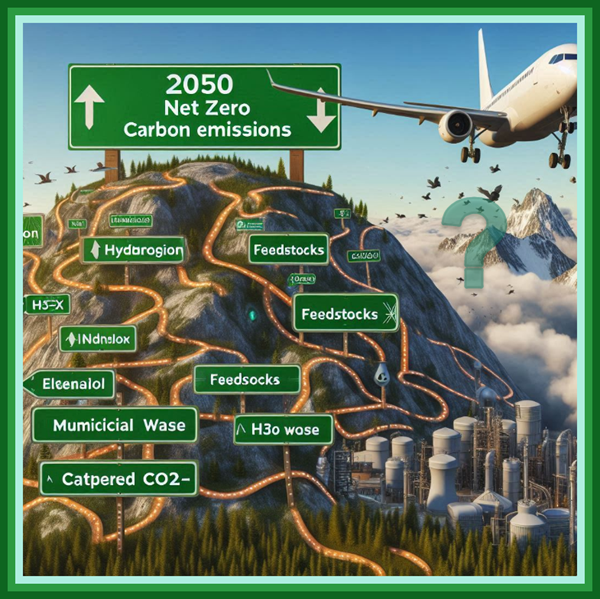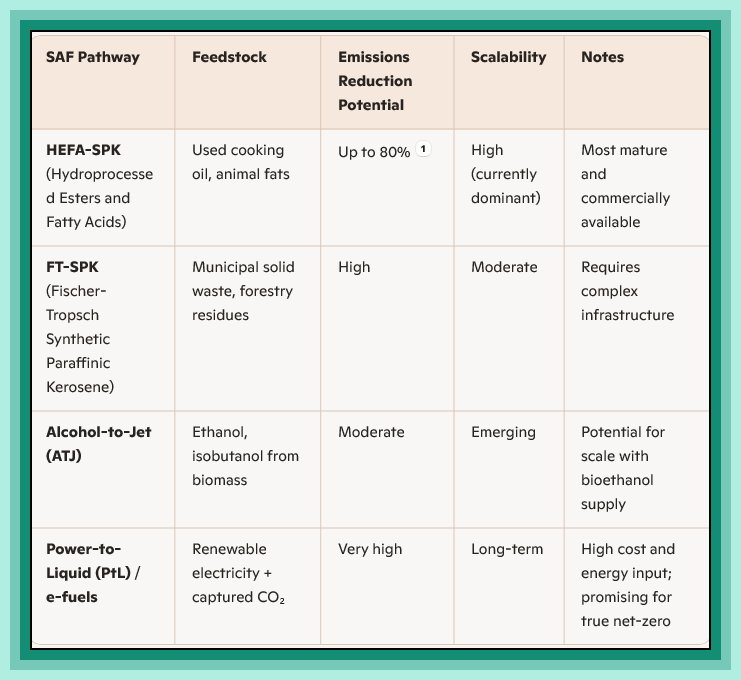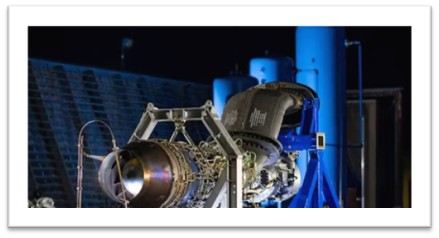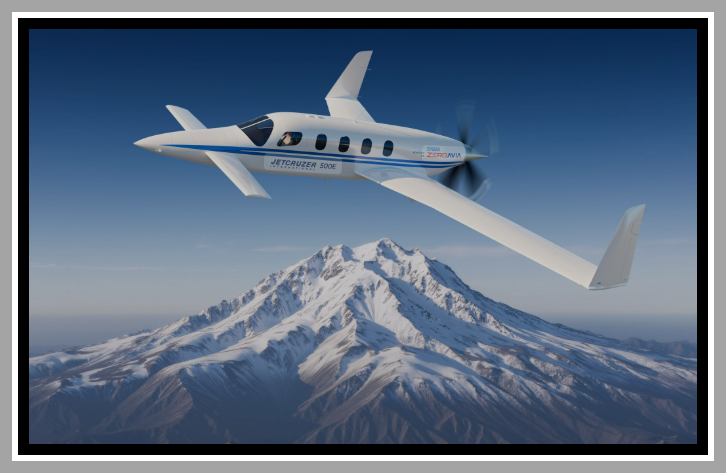News about a new “breakthrough” in SAF poses the question of how these worthwhile efforts are being coordinated

The goal of 2050 has been repeated here many times. The theme continues to be newsworthy because of the high environmental stakes driving this initiative and since the flow of new developments, especially the promising ones, captures the aviation industry’s attention. While the commitment to finding a solution is heavy, there is a contrapuntal theme that some of the governmental actions are too heavy and/or premature[1]. The attached paper reinforces the quandary-
While there is consensus that something must be done, the multitude of potential solutions may cause constant reassessment—
Does this new innovation alter the existing priorities?
By placing such weight on governmental intervention, such as ReFuelEU Aviation mandate (with a significant cost impact) create inertia for the “solution” it supports?
Beyond SAF, there are operational, powerplant research and other alternatives. Is anyone assessing, for example, whether a synthetic fuel is better that flights avoiding airspace which are conducive to contrails creation.
Massive amounts of capital are being poured into different alternatives. The model for this important innovation is COMPETITION– spending cash in the belief/expectation that Answer A > Answer B. Would some level of coordination avoid speculative investments?
ZeroAvia and its developmental partner Jetcruzer International issued a statement about the test results from the use of a high-temperature synthetic fuel, with the mysterious label“H3-X.” The very, very positive Estoy en la Frontera review of this impressive milestone in the development of a Sustainable/Synthetic Aviation Fuel (SAF)*[2] could:
- “..be a move that would reshape the future of sustainable air travel.”
- “performance of the aircraft system exceeded expectations”
- Has a “higher thermal threshold than hydrogen.”
- “It has a higher energy density, making it extremely efficient.
ZeroAvia and Jetcruzer are not yet ready to claim that H3-X is THE SAF answer and the list of other projects trying to create a GREEN FUEL is LONG:
And the news, mostly encouraging, is equally voluminous and typically uncertain as to the prospects of success:
- ICAO #42 report says CONTRAIL policies may avoid >90% of aviation-induced warming by 2050 From EPA Acid Rain lesson time to review CORSIA
- Big announcement of major investment on GREEN SAF, is it the ONE?
- Solid Hydrogen as power source in an eVTOL- a real advance???
- Swiss Alchemy creates SAF with the SUN ???
- More SAF feedstocks = cheaper green fuel?
There is no single consensus on the “best” SAF, but there is broad agreement that SAFs as a category are essential to decarbonizing aviation, with multiple promising pathways depending on feedstock, lifecycle emissions, and scalability. Top of Form
The International Air Transport Association (IATA), World Economic Forum, and Center for Climate and Energy Solutions both emphasize a portfolio approach: scaling multiple SAF pathways while improving lifecycle carbon accounting and feedstock sustainability. Governments and airlines are investing in SAF development, production and distribution. but THE CURRENT GLOBAL SAF PRODUCTION IS LESS THAN 0.1% OF TOTAL JET FUEL USE.
Aviation Breakthrough – 600 kW Airborne Test Uses Super Hot Fuel Instead of Hydrogen, Surprising Engineers
ZeroAvia’s latest airborne test left engineers speechless. What was supposed to be a standard performance evaluation of the company’s 600 kW electric propulsion system (EPS) turned into a jaw-dropping moment when a new high-temperature synthetic fuel entered the spotlight. This mystery fuel, dubbed “H3-X,” could potentially replace hydrogen in the aviation industry as a clean and high-performance alternative — a move that would reshape the future of sustainable air travel.
Let’s break down what just happened, and why it has the aviation world buzzing.
Shock
The test flight used a modified prototype aircraft. Earlier in the year, ZeroAvia joined forces with Jetcruzer International to develop the 500E for a HYDROGEN-ELECTRIC LAUNCH BY 2028. Everything was moving toward a hydrogen-powered future — until the final phase of testing introduced this surprise substitute fuel.
The moment this alternate fuel entered the test phase, the performance of the aircraft system exceeded expectations. Not only did it handle the intense energy load, but it also pushed the EPS beyond what was previously recorded during hydrogen trials. Engineers were left stunned, not because hydrogen failed — but because something better might have just been found.
Fuel
This new synthetic fuel is being called H3-X (at least for now), and although details remain tightly under wraps due to a confidential third-party partner agreement, a few facts are clear:
- It runs at a much higher thermal threshold than hydrogen.
- It has a higher energy density, making it extremely efficient.
- It demands advanced cooling systems due to the intense heat it generates.
This fuel wasn’t just a happy accident. It was intentionally brought in under a confidential clause in ZeroAvia’s development contract, suggesting it may have been in quiet development for some time. What’s exciting is how compatible it is with ZeroAvia’s EPS, indicating the company’s technology is already ahead of the curve.
Breakthrough
ZeroAvia has been earning serious credibility thanks to its 600 kW EPS — a hybrid electric power system that includes:
- Four 200 kW power inverters
- A high-efficiency electric motor generating 2,200 rpm
Recently, the FAA issued the G-1 ISSUE PAPER TO BEGIN CERTIFYING this exact system — proving just how serious and real ZeroAvia’s work is.
But now, this new hot fuel has opened up even more possibilities. It doesn’t cancel out hydrogen, but it presents a parallel path forward — and perhaps a more scalable or versatile one in the long run. Clean, powerful, and fast: it checks all the boxes for a future-ready aviation solution.
Partnership
Jetcruzer International isn’t just along for the ride. Their contribution — the 500E prototype — is expected to become the first aircraft type-certified to fly with a fully electric propulsion system.
Their vision for the future has always included both electric and hydrogen-powered flight, but this new fuel has reshaped their trajectory. Jetcruzer’s CEO, Victor Tao, called the ZeroAvia partnership an opportunity to REBUILD THE INDUSTRY FROM THE GROUND UP, and now, with H3-X in the picture, they may have a wildcard fuel on their hands.
Hydrogen
Despite this new twist, hydrogen isn’t going anywhere — at least not yet. ZeroAvia is still banking on hydrogen as a cornerstone of its mission. The company’s new 136,000 sq. ft. Propulsion Center of Excellence will focus on the continued production and development of hydrogen-electric EPS units.
The Jetcruzer 500E is also still scheduled for expanded hydrogen-focused flight testing in 2026. But what’s different now is that there’s another fuel waiting in the wings. One that might prove more effective, efficient, and even greener than what’s currently on the table.
This surprise fuel discovery didn’t derail ZeroAvia’s hydrogen plans — it supercharged them with a whole new direction. Engineers are still trying to understand just how far H3-X can go, but the buzz is real: aviation may never be the same again
Home > Aerospace > News Article
IATA Urges Realistic EU SAF Policies as Costs Climb
[2] The term Sustainable Aviation Fuel is now officially referred to as Synthetic Aviation Fuel in federal documents and DOE communications.




